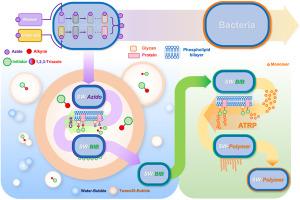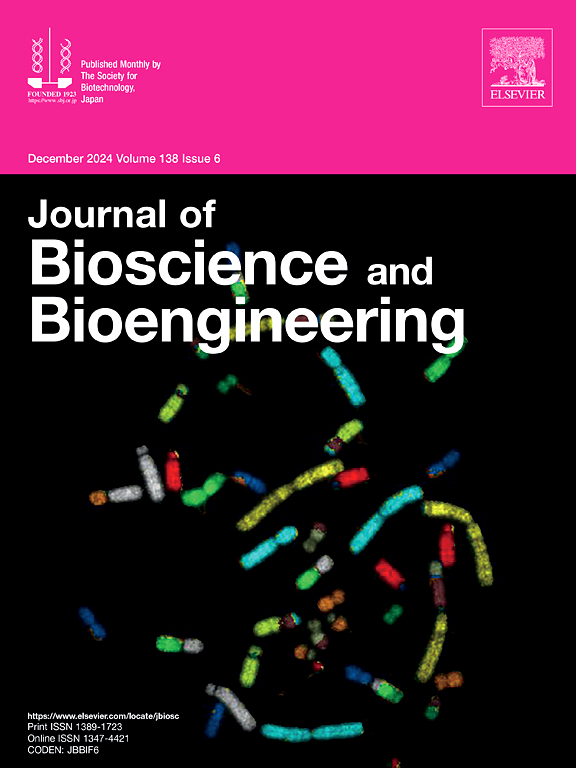Individual cell modification with cell surface specific atom transfer radical polymerization for enhanced Cr(VI) removal
IF 2.3
4区 生物学
Q3 BIOTECHNOLOGY & APPLIED MICROBIOLOGY
引用次数: 0
Abstract
Modifying cells with polymers on the surface can enable them to gain or enhance function with various applications, wherein the atom transfer radical polymerization (ATRP) has garnered significant potential due to its biocompatibility. However, specifically initiating ATRP from the cell surface for in-situ modification remains challenging. This study established a bacterial surface-initiated ATRP method and further applied it for enhanced Cr(VI) removal. The cell surface specificity was facilely achieved by cell surface labelling with azide substrates, following alkynyl ATRP initiator specifically anchoring with azide–alkyne click chemistry. Then, the ATRP polymerization was initiated from the cell surface, and different polymers were successfully applied to in-situ modification. Further analysis revealed that the modification of Shewanella oneidensis with poly (4-vinyl pyridine) and sodium polymethacrylate improved the heavy metal tolerance and enhanced the Cr(VI) removal rate of 2.6 times from 0.088 h−1 to 0.314 h−1. This work provided a novel idea for bacterial surface modification and would extend the application of ATRP in bioremediation.

利用细胞表面特异性原子转移自由基聚合对单个细胞进行改性,以提高六价铬的去除率。
在细胞表面使用聚合物对细胞进行改性,可使细胞获得或增强多种应用功能,其中原子转移自由基聚合(ATRP)因其生物相容性而具有巨大潜力。然而,从细胞表面特异性地引发原子转移自由基聚合以进行原位改性仍具有挑战性。本研究建立了一种细菌表面引发的 ATRP 方法,并将其进一步应用于增强六价铬的去除。细胞表面特异性是通过叠氮基质标记细胞表面,然后炔基 ATRP 引发剂通过叠氮-炔烃点击化学特异性锚定后轻松实现的。然后,从细胞表面开始 ATRP 聚合,成功地将不同的聚合物用于原位修饰。进一步的分析表明,用聚(4-乙烯基吡啶)和聚甲基丙烯酸钠修饰 Shewanella oneidensis 提高了其对重金属的耐受性,并将 Cr(VI) 的去除率从 0.088 h-1 提高到 0.314 h-1 的 2.6 倍。这项工作为细菌表面改性提供了一种新的思路,并将扩大 ATRP 在生物修复中的应用。
本文章由计算机程序翻译,如有差异,请以英文原文为准。
求助全文
约1分钟内获得全文
求助全文
来源期刊

Journal of bioscience and bioengineering
生物-生物工程与应用微生物
CiteScore
5.90
自引率
3.60%
发文量
144
审稿时长
51 days
期刊介绍:
The Journal of Bioscience and Bioengineering is a research journal publishing original full-length research papers, reviews, and Letters to the Editor. The Journal is devoted to the advancement and dissemination of knowledge concerning fermentation technology, biochemical engineering, food technology and microbiology.
 求助内容:
求助内容: 应助结果提醒方式:
应助结果提醒方式:


